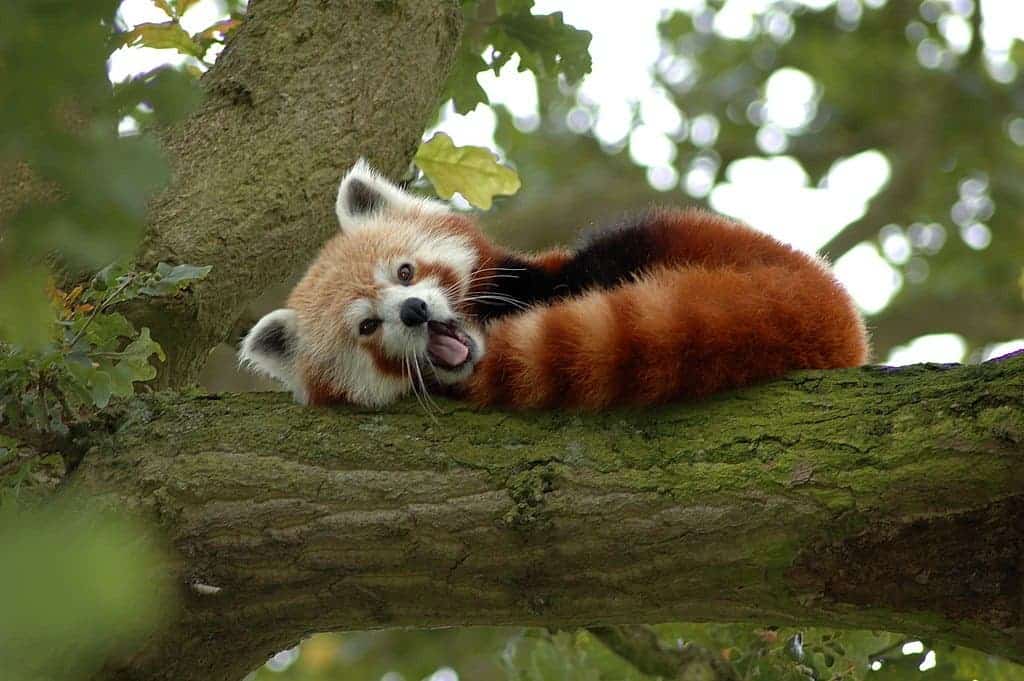The red panda (Ailurus fulgens) is an iconic but endangered species living in the temperate forests in the eastern Himalayas. According to a new study, the adorable red pandas are driven closer and closer to extinction and it’s largely because of human activity. Researchers tracked red pandas in Nepal for a full year and found human impacts are reducing the range of the pandas by further fragmenting its already fragmented habitat.

This medium-sized mammal is a diet specialist, feeding almost exclusively on bamboo. It’s solitary, cryptic, and territorial species, which also makes it difficult to study in the wild. However, previous studies have highlighted the increasing pressure on the red panda habitat due to roads, livestock herding and over-extraction of forest resources — all of which reduce its habitat and consequently threaten its survival.
University of Queensland researcher Damber Bista traveled to Nepal in late 2019, where he tagged red pandas with collars to track their movements by satellite. He returned to Australia in January 2020, hoping to return to Nepal within a few months to monitor the animals and install cameras in the field. But the pandemic started and threw a wrench in the researchers’ plans.
“The satellite tracking allowed me to monitor the red pandas remotely, while I relied on my friends and colleagues in Nepal to install cameras and conduct the field surveys,” Bista said in a statement. “It was a surreal experience, I would spend many hours a day during lockdowns in my home, watching the movement of red pandas.”
Observing red pandas
While in Australia, Bista tracked the movements of a group of red pandas for a full year. It was the fifth know global study done on wild red pandas. Bista was especially interested in an adult panda named “Chintapu,” which was known for its roaming nature and in one 24-hour period traveled 5km, which is unusual for a red panda.
The study found that disturbances and habitat fragmentation influence space use and activity patterns of red pandas, but that habitat quality and disturbances determined their home range size. Red pandas were found by Bista to partition their activity patterns and occupy less risky areas to minimize interaction with disturbance sources.
Red pandas occupy larger ranges in habitats with low forest cover. Their home range size was smaller while living in areas with high road density. They also avoided disturbed areas and spent long hours in locations away from disturbance sources except in areas close to pedestrian trails where they divided their activity pattern.
The pandas perceived humans, dogs, livestock, and vehicles as disturbances, adapting to them by partitioning activity patterns and occupying less disturbed habitat patches. The threat level was high in the mating season because red pandas spend more time on the ground. They became more active during dawn to avoid interactions.
“Current patterns of habitat fragmentation and forest exploitation, from infrastructure projects such as new roads, are placing the red panda under increased threat,” Bista said. “Because of this, red pandas are changing their activity to minimize their interactions with disturbances and this is drastically interfering with natural interactions between the animals.”
Bista suggested strictly regulating human activities during all biologically crucial times for red pandas, such as mating, dispersal, and birthing season. Conservation programs should focus on identifying ecologically sensitive areas, minimizing projects that will disturb habitats such as building roads, and maintaining habitat continuity, he added.
The study was published in the journal Landscape Ecology.









